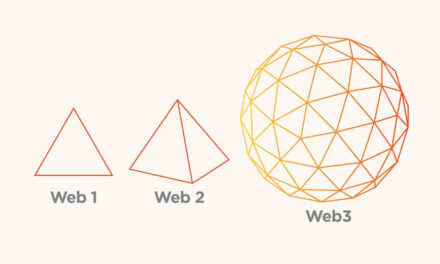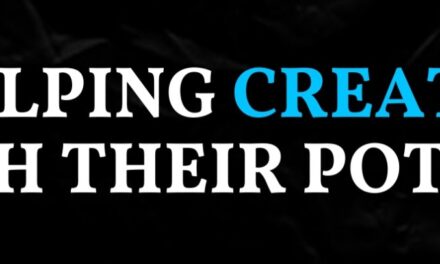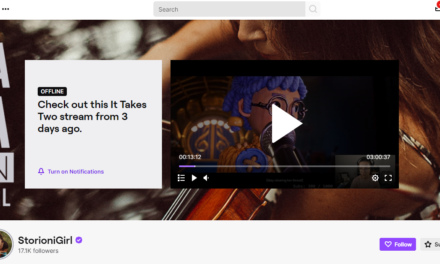The internet as we know it is changing before our eyes. It is in the news, all over Twitter feeds, and creeping into the everyday lexicon. That’s right, it’s Web3, and it represents an amazing opportunity for creators. Of course, a new era also means a new vocabulary, and Web3 definitely has its own terms: gas wars, paper hands, and non-fungible what? This glossary defines over 70 Web3 terms to help you live, create, and operate in a Web3 world.

A – Web3 terms
Address – also referred to as wallet address or blockchain address – just like someone has a home and business address, a blockchain has an address to identify its location. A blockchain address is a long alphanumeric reference to access the precise location of the transaction’s home. It also can be where someone receives, sends, or holds their blockchain transactions. An example of a blockchain address is: 5TdA55HeLopzzwe3Lg7W335tGdCc623PoQ.
Airdrop – a specified amount of cryptocurrency, social tokens, or a new NFT dropped into a holder’s wallet without an additional fee. It is a popular way for NFT projects and social token creators to reward their community.
Alpha – a slang term for “intel.” Those who possess alpha have information that the rest of the market hasn’t found out about yet. These people spend hours and hours finding undiscovered projects, and sometimes, they share this on Twitter or other social media. Usually in reference to NFT projects, but can apply to cryptocurrency as well.
Altcoin – a reference to cryptocurrencies other than Bitcoin (and sometimes Ethereum). Such coins distinguish themselves from Bitcoin by extending their capabilities and plugging their shortcomings.
Ape in – apeing in – buying into an NFT project or social token project often with little or no research. The goal is to buy in shortly after launch to reap possible substantial gains with no due diligence on the buyer’s part. This “low-IQ” approach is what gives apeing in its name. However, it should be noted that often apeing in is a self-assigned term and does not carry a negative connotation.
B – Web3 terms
Bitcoin – a decentralized digital currency created in 2009. Bitcoin uses cryptography to keep it secure. There are no physical bitcoins. Ownership is recorded on a public ledger (blockchain) that everyone can access, though each record is encrypted. All Bitcoin transactions are verified by a massive amount of computing power via a process known as “mining.”
Blockchain – a distributed database shared among the nodes of a computer network. As a database, a blockchain stores information electronically in digital format. Blockchains are best known for their role in cryptocurrency for maintaining a secure and decentralized record of transactions. A blockchain collects information in groups, known as blocks. When the block’s storage capacity is filled, it is closed and linked to the previously filled block, forming a chain of data known as the blockchain. Then, new information is compiled into a new block that will be added to the chain once it reaches capacity.
Bridge in/bridge out – a blockchain bridge is a connection that allows the transfer of social tokens from one chain to another. Both chains can have distinct protocols, rules, and governance models, but the bridge provides a compatible way to conduct the transaction securely on both sides. For example, holders of Rally.io tokens can bridge out some (or all) of their holdings in the Rally sidechain to the Ethereum chain. From there, they can sell (or bridge) their Ethereum for currency.
Burn – the process where miners and developers permanently remove cryptocurrency coins from circulation. They send the coins to specialized addresses whose private keys are not accessible, thus making the coins inaccessible for further trading. The developers then provide the proof-of-burn algorithm to the market to facilitate cross-verification. Coin burning is a market tool to increase the value of cryptocurrency.
C – Web3 terms
Circulating supply – the number of cryptocurrency coins or tokens publicly available in the market. The circulating supply of a cryptocurrency can increase or decrease over time. The number of coins increases as new coins are mined and decreases when a coin burn event occurs.
Community coin or community token – see social token
Composability – the general ability of components of a system to be recombined into larger structures and the output of one to be the input of another. In simple terms, the best example is Lego bricks, where every piece can connect to every other piece. Within crypto, composability is the ability of decentralized applications (dApps) and DAOs to effectively clone and integrate one another (syntactic composability). For example, a smart contract on the Ethereum network can be written once and recombined into subsequent contracts using and building on the original software logic. Morphological composability allows software components such as tokens and messages to operate between each other or among dApps or smart contracts.
Creator coin – see social token
D – Web3 terms
DAO – Decentralized Autonomous Organization – a community-led entity with no central authority. Ultimately, a DAO is governed entirely by its individual members who collectively make critical decisions about the future of the project, such as technical upgrades and treasury allocations. It is fully autonomous and transparent: smart contracts lay the foundational rules, execute the community’s agreed-upon decisions, and at any point can be publicly audited.
DApps – Decentralized Applications – digital applications that run on a blockchain network of computers instead of relying on a single computer. Since DApps are decentralized, they are free from the control and interference of a single authority. Benefits of dApps include the safeguarding of user privacy, the lack of censorship, and the flexibility of development.
Decentralized network – in computing terms, a decentralized network architecture distributes workloads among several machines instead of relying on a single central server. No one company or company’s servers control the network. Decentralized networks offer a wide range of benefits over centralized networks, including increased system reliability, scale, and privacy.
Degen – short for “degenerate,” usually refers to people who make risky and bad bets. In the crypto space, it can refer to people who invest in digital assets like NFTs without doing due diligence.
Diamond hands – someone who holds their position (investment, NFT, cryptocurrency) no matter what, even during big market swings. Someone with diamond hands wouldn’t mind the assets’ price actions. Their intent is to hold the investment until they achieve their investment goal.
DYOR – Do Your Own Research – one of the more important aspects of Web3, cryptocurrency, and NFTs is to do your own research. Though one can take the advice of others, ultimately, they are responsible for their decisions and should make their own informed decisions.
E – Web3 terms
ETH – abbreviation for Ethereum cryptocurrency. Ethereum is a blockchain network with a decentralized public ledger for verifying and recording transactions. Its currency is Ether (ETH).
Exchange – a platform on which to buy and sell cryptocurrency. Users can trade one crypto for another or buy crypto using traditional currency. Exchanges also can convert cryptocurrencies into US dollars or other government-backed currencies to be deposited into a traditional bank account.
F – Web3 terms
Fiat currency – the paper/coin currency of the government or region, typically declared as legal tender.
Floor – the floor or floor price is the lowest price to buy an NFT on the secondary market. It’s the most popular metric for tracking an NFT collection’s performance over time and comparing it to others.
Floor sweep – buying a large number of the cheapest NFTs in a collection on the secondary market. NFT collection creators sometimes do this or are asked by the community to do this for the project to raise the floor price.
Forks – an update in the network protocol (the open-source software that runs blockchains). A soft fork is a minor upgrade to the software and typically means nothing for users. A hard fork is a major change to the network and requires users/miners to update to the latest software to continue mining. If developers decide they do not like a blockchain’s direction, they can do a hard fork and create a new coin.
Fractionalized NFTs – a division of ownership of an NFT. This makes it possible for several people to own a single NFT. Smart contracts can differentiate between a fractional NFT and an individually owned NFT.
Fren – short for friend; often refers to someone active in an NFT community.
FUD – Fear, Uncertainty, and Doubt – term used in crypto and NFTs to describe inaccurate or false news stories, tweets, Discord messages, etc. Often used when someone questions the legitimacy of an NFT project.
G – Web3 terms
Gas and gas fees – transaction fees that users pay to miners on a blockchain protocol to have their transactions included in the block. The system works on a standard supply-and-demand mechanism. If there is more demand for transactions, miners can choose to include different levels of transactions, compelling users to pay more to have their transactions processed quickly and efficiently, as seen in the diagram below. Several websites track gas prices, like ethgastation.info or ethereumprice.org.
Gas wars – a surge in minting costs caused when there are significantly more buyers than available NFTs in a collection; users need to increase their gas fee and outbid others’ for the transaction to happen.
GM – good morning – common greeting used in Web3 and crypto communities.
Gwei – a term for a very small amount of Ethereum cryptocurrency and commonly used when discussing and paying transactions fees on the Ethereum network. One Gwei is equal to 0.000000001 ETH.
H – Web3 terms
Hardware wallet – cold wallet – a hardware device that can securely store cryptocurrency. Secured because the user’s private keys are stored in a protected area of the microcontroller and cannot be extracted as plain text. Additionally, a hardware wallet functions offline, meaning the private keys are never exposed to potential hackers. There are several models of hardware wallets, with the Ledger Nano S being the most popular.
Hodl (or hodling) – a hold in the context of buying and holding Bitcoin and other cryptocurrencies. Hodl is derived from a misspelling of “hold” from a Bitcoin forum post from 2013. It has also come to stand for “hold on for dear life” among crypto investors. I Immutable – information that cannot be changed once recorded; used in reference to the blockchain and smart contracts for NFTs and cryptocurrency.
K – Web3 terms
KYC – know your customer – the process of verifying a customer’s identity. Most commonly used by financial institutions and financial service businesses, including banks, stockbrokers, and cryptocurrency exchanges.
M – Web3 terms
Mainnet – a blockchain that transfers a digital currency from a sender to a recipient. Mainnet is the main network; actual transactions take place on a distributed ledger.
Metaverse – the metaverse is an expansive network of persistent, real-time rendered 3D worlds and simulations that support continuity of identity, objects, history, payments, and entitlements; can be experienced synchronously by an unlimited number of users, each with an individual sense of presence. More simply, a set of virtual spaces where people can create and explore with other people who aren’t in the same physical space. Decentraland and The Sandbox are two of the most popular metaverse platforms.
Mining/miners – the process of adding transactions to a large distributed public ledger of existing transactions known as a blockchain. Mining involves creating a hash of a block (a digital fingerprint) of transactions that cannot be easily forged, protecting the integrity of the entire blockchain without the need for a central system. The main incentive for mining is that individuals who choose to use a computer for mining are rewarded for doing so via cryptocurrency compensation. For example, bitcoin miners earn 25 bitcoin per hash.
Minting – the process of turning a digital file into a crypto collectible or digital asset on a blockchain. The digital item or file is stored forever in this decentralized database or distributed ledger, and it is impossible to edit, modify, or delete. During the minting process, the creator of the NFT can schedule royalties from every subsequent sale.
Moon – a term often employed as a verb (mooning) to describe a cryptocurrency on a strong upward market trend. Expression of “to the moon” refers to a strong belief that a certain cryptocurrency is soon going to rise significantly in price.
N – Web3 terms
NFA – Not Financial Advice – a warning of the inherent risks to potential investors of cryptocurrency and NFT projects.
NFT – Non-Fungible Tokens – cryptographic assets on a blockchain with unique identification codes and metadata that distinguish them from each other. NFTs can be used to represent real-world items like artwork and real estate. “Tokenizing” these real-world tangible assets allows them to be bought, sold, and traded more efficiently while reducing the probability of fraud. NFTs can also be used to represent individuals’ identities, property rights, and more.
NGMI – Not Going to Make It – a person will be unsuccessful due to a bad decision, poor judgment, or holding an opinion not in accordance with the community’s opinions; negative connotation, essentially equivalent to calling someone a loser.
Node – a computer connected to a cryptocurrency network; can execute functions like creating, receiving, or sending information.
P – Web3 terms
Paper hands – someone nervous about an investment, cryptocurrency, or NFT who sells quickly, is easily shaken by market volatility, and often exits their positions after any sign of risk. People with paper hands will sell under pressure to avoid losing money.
P2P – peer-to-peer, a decentralized platform where two individuals interact without intermediation by a third party. The buyer and the seller transact directly with each other via the P2P service. The P2P platform may provide services such as search, screening, rating, payment processing, or escrow.
PFP – profile picture – usually refers to a profile picture as an NFT.
Play to earn – a business model for the video game industry that allows players to earn digital assets they can sell for money in a marketplace. Many of the assets are NFTs, such as a game skin, cool weapon, or an animal to breed. Examples include Axie Infinity, ZED RUN, Splinterlands, and Cryptofighters.
POAP – proof-of-attendance protocol – a system used to distribute crypto-badges (ERC721 tokens or on the xDAI chain with no gas fees) to event attendees, course graduates, or something similar. A person’s POAP collection acts as a digital proof of representation without providing explicit personal data.
Project – A collection of NFTs made by a creator, such as Bored Ape Yacht Club, VeeFriends, and CryptoDads.
Public/private key – allows users to send and receive cryptocurrency without requiring third-party verification. The public and private keys fit together as a key pair. Users share their public keys to receive transactions but keep their private keys secret. Access to the private keys gives that person(s) access to any cryptocurrency associated with those keys. Private keys are kept in a digital wallet and are not on the cryptocurrency blockchain network. Users who keep cryptocurrency on an exchange make the exchange the custodian of their private keys; it’s the same as trusting a bank vault to hold one’s gold in the vault. Users likely never directly handle their private keys as wallets generally manage them automatically. Typically, users are given a seed phrase that encodes their private keys as a backup.
R – Web3 terms
Reveal – buyers of an NFT sometimes have a general idea of what it looks like, but they only see it when all NFTs in the project are revealed at the same time. This makes it a surprise what traits or rarity the NFT possesses.
Right clicker – a term to describe NFT naysayers who right-click to save the image without paying for the NFT and troll the person who paid a hefty price to own.
Rug or rugpull – a scam where the people behind a seemingly legit project disappear with all the money immediately after launch. Buyers might get an actual NFT, but it’s most likely worthless and not tradeable on a secondary marketplace. https://www.gemini.com/cryptopedia/public-private-keys-cryptography
S – Web3 terms
Satoshi – the smallest fraction of coins in the Bitcoin cryptocurrency system. Named after Satoshi Nakamoto, the alias of the inventor of Bitcoin. One Satoshi is one-hundred-millionth (0.00000001) Bitcoin. Scarcity – a limited supply of goods or tokens. Scarcity builds value. For example, Bitcoin is scarce as only 21 million will be mined. Secondary market – place where a minted NFT is bought or sold like Opensea.
Seed phrase – a series of words generated by the cryptocurrency wallet provider that gives the holder access to the crypto in their wallet. The list of 12 to 24 simple words is not a sentence (e.g., fiction, tree, cat, radio, stream, cloud, paper, cushion, abstract, bronze, pilot, orange). Having the seed phrase gives one access to all crypto associated with the wallet that generated the phrase, even if the wallet is deleted or lost. NEVER give your seed phrase to anyone. Keep it in a secure place separate from where you access your wallet.
Shill/shilling – a person is engaged in advertising a cryptocurrency or NFT project by endorsing the project or product in public forums or communities.
Sidechain – a separate blockchain that runs parallel to Ethereum Mainnet and operates independently. It has its own consensus algorithm and is connected to Mainnet by a two-way bridge.
Skeuomorphic design – a derivative or imitation of something else. Allows the user to feel more comfortable using applications, products, and services that imitate objects with which they are already familiar. For example, the icon for the calculator or calendar app on a phone or the trash can image where a laptop user drops deleted files.
Smart contracts – a tamper-proof program that runs on a blockchain network when certain predefined conditions are satisfied. By running on a decentralized blockchain instead of a centralized server, smart contracts allow multiple parties to come to a shared result in an accurate, timely, and tamper-proof manner. Smart contracts improve trust relationships over current centralized transactions by ensuring that two parties that do not know each other can trust the transaction without a third party due to their tamper-proof and public nature. A smart contract is the code that deploys an NFT.
Snapshot – usually in relation to an airdrop or free minting opportunity; a project or team takes a snapshot at a point in time to determine who’s eligible for a free NFT or token. For example, CryptoDad took a snapshot and made all of its NFT holders at that time eligible to mint a CryptoMom NFT for free.
Social token – community coins/token, creator coins – tokens issued by a community, creator, brand, or influencer; decentralized and secured by the blockchain. Social tokens are built on the same model as cryptocurrency and work because they are scarce, portable, owned, and tracked via the blockchain). Coinvise, Roll, and Rally are popular social token networks where creators can launch their own social tokens.
Staking – a way of earning rewards for holding certain cryptocurrencies. Currently, Tezos, Cosmos, and Ethereum allow staking to earn a percentage rate reward over time. The blockchain makes staking rewards possible. Cryptocurrencies allow staking using a “consensus mechanism” called proof of stake to ensure that all transactions are verified and secured without a bank or payment processor in the middle. Crypto, if the crypto holders choose to stake it, becomes part of that process.
T – Web3 terms
Token – anything that has value or anything that can be exchanged for goods or services. Examples include fiat currency, cryptocurrency, NFTs, and gifts.
W – Web3 terms
WAGMI – We’re All Going to Make It – WAGMI means that the group (i.e., the NFT community) will be successful, often expressed in reaction to good news or after actions generally believed to lead to successful outcomes. It is an expression of camaraderie within the community and a prediction of future success.
Wallet (hot wallet) – a digital wallet that facilitates transactions and holds cryptocurrency and NFTs. Wallets are necessary to purchase and trade NFTs and cryptocurrencies. Hot wallets are online and accessible via a seed phrase or username and ID. Popular wallets include Metamask, Coinbase Wallet, Rainbow Wallet, Enjin Wallet, and Trust Wallet.
WETH – Wrapped ETH – a cryptocurrency that allows users to make pre-authorized bids that can be fulfilled at a later date without any further action. WETH is used to buy and sell at auctions on OpenSea. ETH and WETH are worth exactly the same amount and can be exchanged directly on an OpenSea profile. However, users need to pay gas fees to exchange ETH for WETH if they win the bid.
Whale – an individual who holds a large amount of a particular cryptocurrency, social token, or NFT. A whale has enough coins or tokens to cause a significant impact on the market prices by selling or buying large amounts.
About the author
Marc Maxhimer is the Partnerships & Publishing Coordinator at Tilt Publishing. He holds a bachelor’s degree in English and mathematics education and a master’s degree in educational administration. He previously taught middle school for 16 years. Marc lives in (and loves all things) Cleveland with his wife, two daughters, and dog Wilson. He looks forward to helping any content entrepreneur publish their book.










